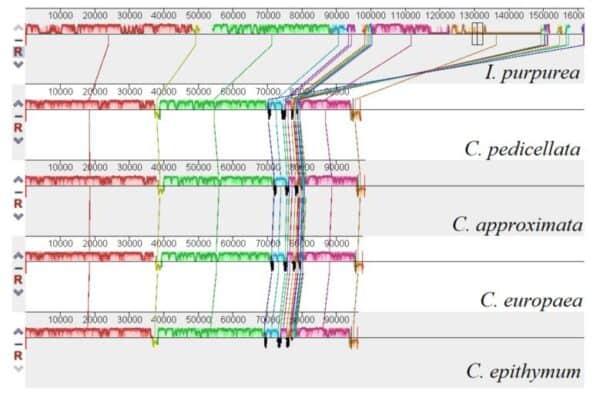Background Cuscuta, a parasitic plant species in the Convolvulaceae family, grows in many countries and regions. However, the relationship between some species is still unclear. Therefore, more studies are needed to assess the variation of the chloroplast (cp) genome in Cuscuta species and their relationship with subgenera or sections, thus, providing important information on the evolution of Cuscuta species.
Results In the present study, we identified the whole cp genomes of C. epithymum, C. europaea, C. gronovii, C. chinensis and C. japonica, and then constructed a phylogenetic tree of 23 Cuscuta species based on the complete genome sequences and protein-coding genes. The complete cp genome sequences of C. epithymum and C. europaea were 96,292 and 97,661 bp long, respectively, and lacked an inverted repeat region. Most cp genomes of Cuscuta spp. have tetragonal and circular structures except for C. epithymum, C. europaea, C. pedicellata and C. approximata. Based on the number of genes and the structure of cp genome and the patterns of gene reduction, we found that C. epithymum and C. europaea belonged to subgenus Cuscuta. Most of the cp genomes of the 23 Cuscuta species had single nucleotide repeats of A and T. The inverted repeat region boundaries among species were similar in the same subgenera. Several cp genes were lost. In addition, the numbers and types of the lost genes in the same subgenus were similar. Most of the lost genes were related to photosynthesis (ndh, rpo, psa, psb, pet, and rbcL), which could have gradually caused the plants to lose the ability to photosynthesize.
Conclusion Our results enrich the data on cp. genomes of genus Cuscuta. This study provides new insights into understanding the phylogenetic relationships and variations in the cp genome of Cuscuta species.
BMC Genomics 24:310, 2023.
